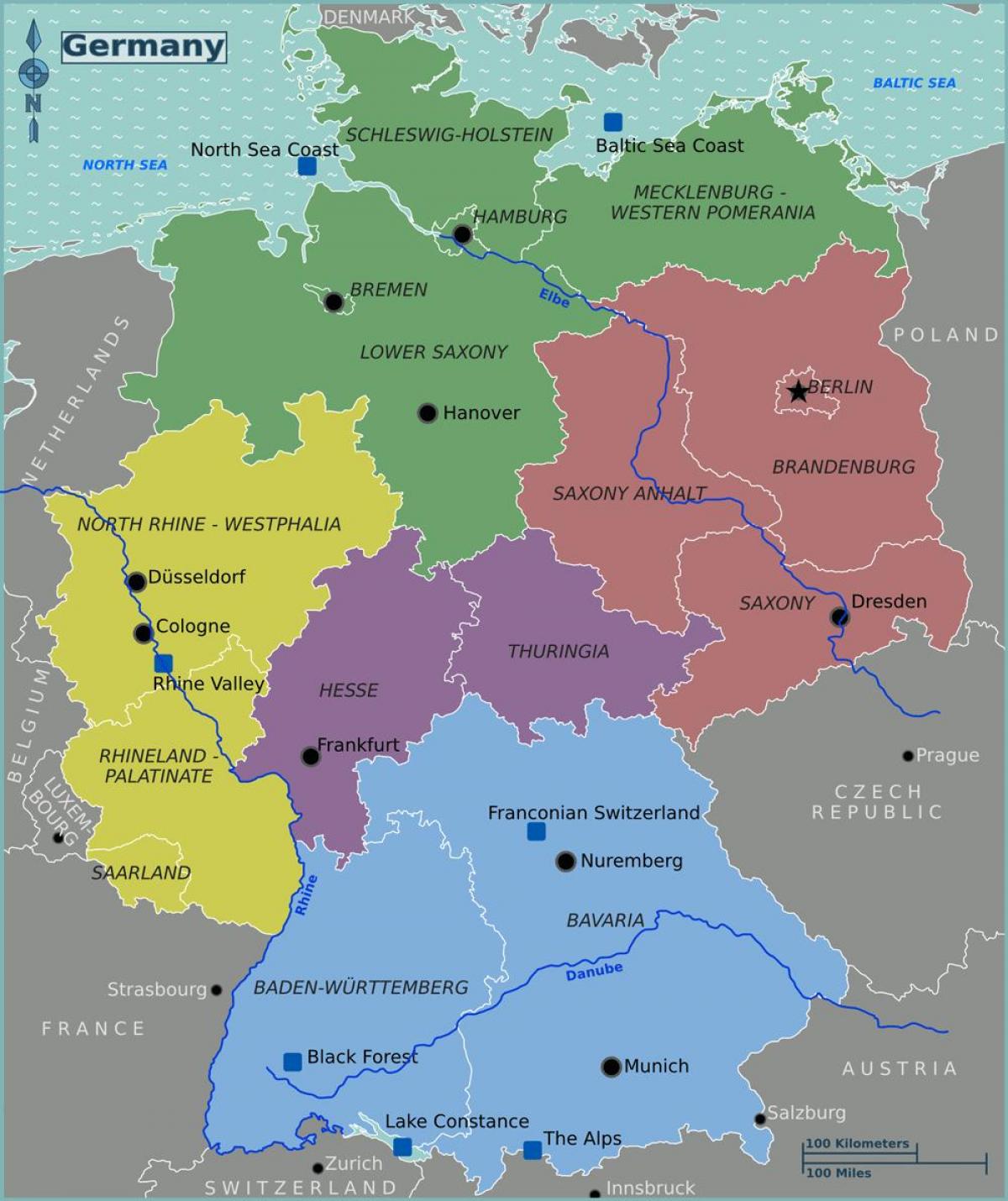search
Map of Germany
Germany in a map. Map of Germany (Western Europe - Europe) to print. Map of Germany (Western Europe - Europe) to download. Germany achievements in the sciences have been significant, and research and development efforts form an integral part of the economy. The Nobel Prize has been awarded to 103 German laureates as its mentioned in the map of Germany. For most of the 20th century, German laureates had more awards than those of any other nation, especially in the sciences (physics, chemistry, and physiology or medicine). The work of Albert Einstein and Max Planck was crucial to the foundation of modern physics, which Werner Heisenberg and Max Born developed further. They were preceded by such key physicists as Hermann von Helmholtz, Joseph von Fraunhofer and Gabriel Daniel Fahrenheit, among others. Wilhelm Röntgen discovered X-rays and was the first winner of the Nobel Prize in Physics in 1901.
Germany is one of the leading countries in developing and using green technologies. Companies specializing in green technology have an estimated turnover of 200€ billion. Especially the expertise in engineering, science and research of Germany is eminently respectable. The lead markets of Germany green technology industry are power generation, sustainable mobility, material efficiency, energy efficiency, waste management and recycling, sustainable water management. German inventors, engineers and industrialists such as Count Ferdinand von Zeppelin, Otto Lilienthal, Gottlieb Daimler, Rudolf Diesel, Hugo Junkers and Karl Benz helped shape modern automotive and air transportation technology as its shown in the map of Germany.
With its estimated population of 81.8 million in January 2010, Germany is the most populous country in the European Union and ranks as the 16th most populous country in the world. Its population density stands at 229.4 inhabitants per square kilometre. The overall life expectancy in Germany at birth is 79.9 years. The fertility rate of 1.4 children per mother, or 7.9 births per 1000 inhabitants in 2009 as you can see in the map of Germany, is one of the lowest in the world. Since the 1970s, Germany death rate has continuously exceeded its birth rate. The Federal Statistical Office of Germany forecast that the population will shrink to between 65 and 70 million by 2060 (depending on the level of net migration).
German is the official and predominant spoken language in Germany as its shown in the map of Germany. It is one of 23 official languages in the European Union, and one of the three working languages of the European Commission. Recognised native minority languages in Germany are Danish, Low German, Sorbian, Romany, and Frisian; they are officially protected by the ECRML. The most used immigrant languages are Turkish, Kurdish, Polish, the Balkan languages, and Russian; 67% of German citizens claim to be able to communicate in at least one foreign language and 27% in at least two languages other than their own. Standard German is a West Germanic language and is closely related to and classified alongside English, Low German, Dutch, and the Frisian languages.
Germany has the world oldest universal health care system, dating back to Otto von Bismarck Social legislation in 1883. Currently the population is covered by a fairly comprehensive health insurance plan provided by statute. Certain groups of people (lifetime officials, self-employed persons, employees with high income) can opt out of the plan and switch to a private insurance contract. Previously, these groups could also choose to do without insurance, but this option was dropped in 2009. According to the World Health Organization, Germany health care system was 77% government-funded and 23% privately funded as of 2005 as you can see in the map of Germany. In 2005, Germany spent 11% of its GDP on health care. Germany ranked 20th in the world in life expectancy with 77 years for men and 82 years for women, and it had a very low infant mortality rate (4 per 1,000 live births).


